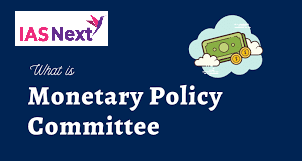CURRENT AFFAIRS
Get the most updated and recent current affair content on Padhaikaro.com
Monetary Policy Committee
- IAS NEXT, Lucknow
- 12, Feb 2022

Reference News:-
The Reserve Bank of India maintained status quo in policy rates as the Monetary Policy Committee (MPC) voted unanimously to keep the policy repo rate at 4% to keep the stance accommodative.
Key takeaways
- Marginal Standing Facility (MSF) rate and bank rate will remain unchanged at 4.25%.
- Reverse repo rate will also remain unchanged at 3.35%.
- GDP Projection: Real GDP growth for 2022-23 was projected at 7.8%.
- Accommodative Stance: It decided to continue with an accommodative stance as long as necessary to revive and sustain growth and continue to mitigate the impact of Covid-19 on the economy, while ensuring that inflation remains within the target going forward.
- An accommodative stance means a central bank will cut rates to inject money into the financial system whenever needed
Key Terms
- Repo rate is the rate at which the central bank of a country (RBI in case of India) lends money to commercial banks in the event of any shortfall of funds. Here, the central bank purchases the security.
- Reverse repo rate is the rate at which the RBI borrows money from commercial banks within the country.
- Bank Rate: It is the rate charged by the RBI for lending funds to commercial banks.
- Marginal Standing Facility (MSF): MSF is a window for scheduled banks to borrow overnight from the RBI in an emergency situation when interbank liquidity dries up completely.
What is Monetary Policy Committee?
- Urjit Patel committee in 2014 recommended the establishment of the Monetary Policy Committee.
- It is a statutory and institutionalized framework under the Reserve Bank of India Act, 1934, for maintaining price stability, while keeping in mind the objective of growth.
- Composition: Six members (including the Chairman) – three officials of the RBI and three external members nominated by the Government of India.
- The Governor of RBI is ex-officio Chairman of the committee
- Functions: The MPC determines the policy interest rate (repo rate) required to achieve the inflation target (presently 4%). Decisions are taken by majority with the RBI Governor having the casting vote in case of a tie.